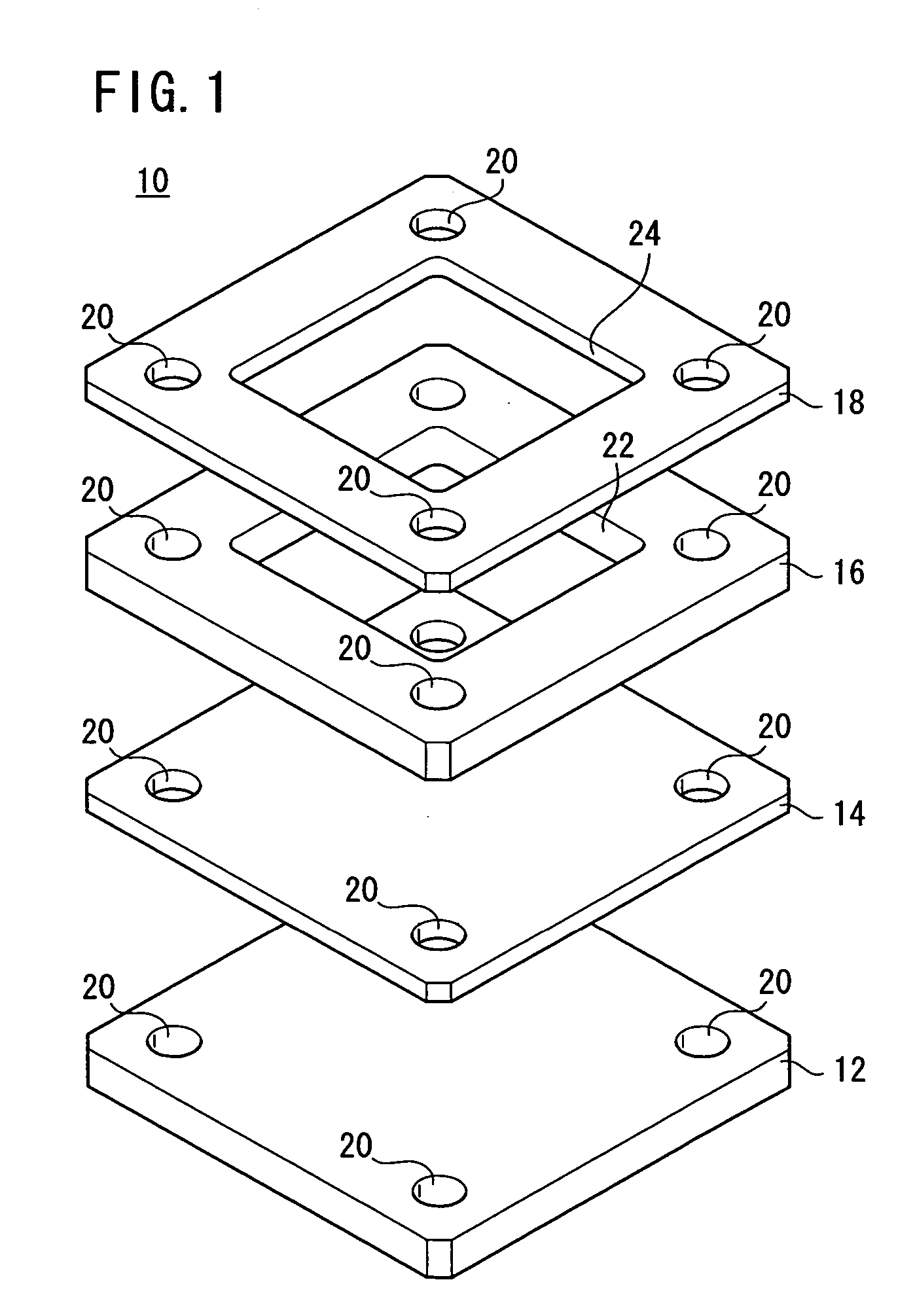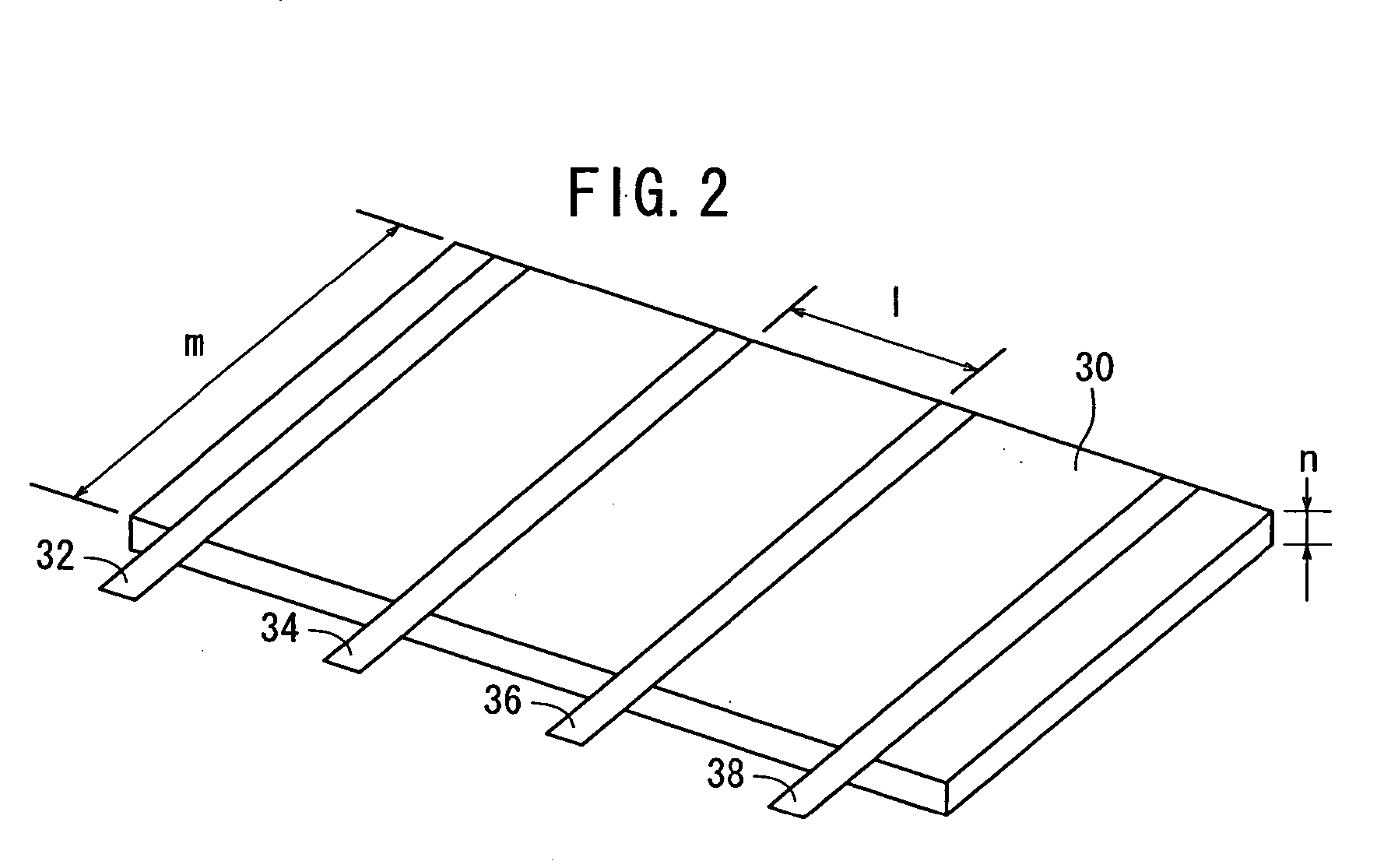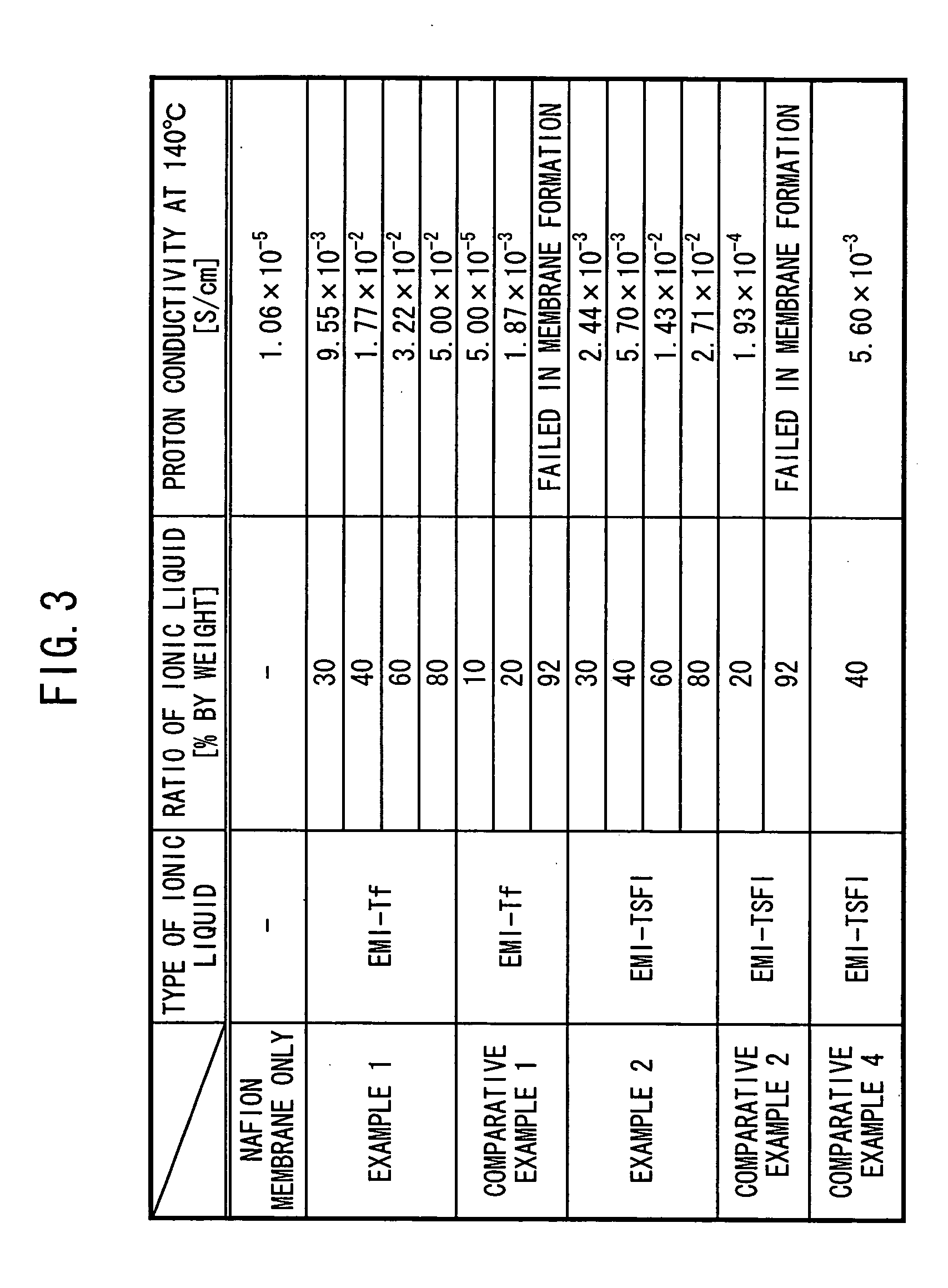Proton conductor and method for producing the same
a technology of protons and conductors, applied in the field of protons, can solve the problems of reducing the protons of electrolyte, generating fine cracks within the entire membrane, and deteriorating the power generation performance of the fuel cell, and achieves the effect of favorable characteristics for an electrochemical cell and excellent retention of a large amount of ionic liquid
- Summary
- Abstract
- Description
- Claims
- Application Information
AI Technical Summary
Benefits of technology
Problems solved by technology
Method used
Image
Examples
example 1
[0082] 19.2 g (0.2 mole) of 1-ethylimidazole was dissolved in 200 ml of 1,1,1-trichloroethane in an eggplant-shaped flask having a volume of 500 ml. 32.1 g (0.2 mole) of methyltrifluoromethane sulfonate was added dropwise to this solution over 1 hour or more. Accordingly, the chemical reaction formula (A) was advanced.
[0083] Reflux was performed for 2 hours, the product was separated by means of a separatory process, and the product was washed twice with 100 ml of 1,1,1-trichloroethane. After that, drying was performed under reduced pressure to obtain 47 g (0.18 mole) of 1-ethyl, 3-methylimidazolinium trifluoromethane sulfonate (EMI-Tf) as an ionic liquid.
[0084] Subsequently, Nafion, which is a perfluorosulfonic acid polymer, was dissolved in a solvent comprising 10% by weight of pure water and 90% by weight of propanol, so that the amount of Nafion was 5% by weight with respect to the weight of the solvent. EMI-Tf, which was obtained as described above, was added to this solutio...
example 2
[0086] 12 g (0.082 mole) of 1-ethyl, 3-methylimidazolium chloride was dissolved in 100 ml of pure water in an eggplant-shaped flask having a volume of 500 ml. The solution was heated to 70° C., and another solution was slowly added thereto dropwise, the other solution being obtained by dissolving 23.50 g (0.082 mole) of lithium bis[(trifluoromethyl)sulfonyl]imide in 200 ml of pure water. Accordingly, the chemical reaction formula (B) was advanced.
[0087] Following dropwise addition of the other solution, a separatory process was performed, and the product obtained thereby was washed twice with 60 ml of pure water. After that, drying was performed under a reduced pressure to obtain 29.3 g (0.074 mole) of 1-ethyl, 3-methylimidazolium bis[(trifluoromethyl)sulfonyl]imide (EMI-TFSI) as an ionic liquid.
[0088] Thereafter, the process was continued in the same manner as in Example 1, to obtain respective membranes each having a width of 30 mm, a length of 30 mm, and a thickness of 50 μm, ...
PUM
| Property | Measurement | Unit |
|---|---|---|
| Fraction | aaaaa | aaaaa |
| Fraction | aaaaa | aaaaa |
| Fraction | aaaaa | aaaaa |
Abstract
Description
Claims
Application Information
 Login to View More
Login to View More - R&D
- Intellectual Property
- Life Sciences
- Materials
- Tech Scout
- Unparalleled Data Quality
- Higher Quality Content
- 60% Fewer Hallucinations
Browse by: Latest US Patents, China's latest patents, Technical Efficacy Thesaurus, Application Domain, Technology Topic, Popular Technical Reports.
© 2025 PatSnap. All rights reserved.Legal|Privacy policy|Modern Slavery Act Transparency Statement|Sitemap|About US| Contact US: help@patsnap.com



